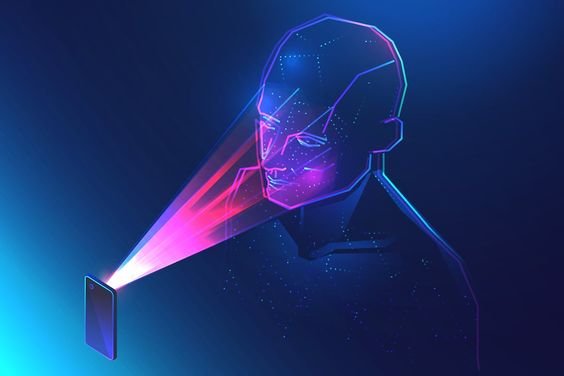
TikTok, a popular social media app, has taken the world by storm. With its short videos, catchy music, and entertaining content, it has attracted millions of users, especially young people, worldwide. However, TikTok is not just known for its fun and engaging platform; it has also been the subject of numerous debates and controversies, particularly concerning data privacy. Many people wonder if they should be worried about their privacy when using TikTok. In this article, we will explore what TikTok is, how it handles user data, the concerns surrounding its data privacy practices, and what steps users can take to protect their information.
What is TikTok?
TikTok is a social media app that allows users to create, share, and watch short videos. Launched in 2016 by the Chinese company ByteDance, TikTok quickly gained popularity worldwide, especially among teenagers and young adults. The app allows users to record videos up to 60 seconds long, add music, effects, and filters, and share them with their followers or the general public. With its easy-to-use interface and powerful recommendation algorithms, TikTok has become one of the most downloaded apps globally.
READ MORE: Why More Brands Are Launching Foldable Phones in 2024
How Does TikTok Handle User Data?
Like many social media apps, TikTok collects a significant amount of data from its users. This data includes:
- Personal Information: When users sign up for TikTok, they provide basic personal information such as their name, phone number, email address, and age. TikTok may also collect additional information, like profile pictures and location data.
- Content Data: TikTok collects information about the content users create, such as videos, comments, likes, shares, and interactions with other users. The app also monitors how users engage with the content they view, such as how long they watch a video or whether they like or share it.
- Device and Network Information: TikTok collects technical data about the device being used, such as the model, operating system, unique device identifiers, and network information like IP address and mobile carrier. The app may also access a user’s contacts if granted permission.
- Behavioral Data: TikTok uses algorithms to track user behavior on the app, including the types of videos watched, liked, shared, or commented on. This data helps TikTok personalize the user experience, providing tailored content recommendations to keep users engaged.
READ MORE: Why Google Is on Trial for Monopolistic Practices
Why Are People Concerned About TikTok’s Data Privacy?
There are several reasons why TikTok’s data privacy practices have raised concerns among users, governments, and privacy advocates:
- Ownership and Control by a Chinese Company: TikTok is owned by ByteDance, a Chinese technology company. This has led to concerns that user data collected by TikTok could be accessed by the Chinese government under China’s national security laws. Critics worry that this data could be used for surveillance, political influence, or other purposes.
- Data Collection Practices: TikTok collects a vast amount of user data, including information not just about what users post or like but also about their behavior, location, and device. Some experts believe that the extent of this data collection goes beyond what is necessary for the app to function and could be used for more intrusive purposes, such as detailed user profiling.
- Past Privacy Violations: TikTok has faced allegations and legal actions in various countries for mishandling user data. For example, in 2019, TikTok was fined by the U.S. Federal Trade Commission (FTC) for illegally collecting personal information from children under the age of 13 without parental consent. This and other incidents have raised doubts about TikTok’s commitment to user privacy.
- Lack of Transparency: TikTok has been criticized for not being transparent about its data practices. Some users and experts argue that TikTok’s privacy policy is vague and does not clearly explain how data is collected, stored, or shared with third parties. This lack of clarity makes it difficult for users to understand what they are agreeing to when using the app.
- Concerns About Security Vulnerabilities: There have been reports of security vulnerabilities in TikTok’s app that could potentially be exploited by hackers or malicious actors. These vulnerabilities could lead to unauthorized access to user data, posing risks to personal privacy and security.
READ MORE: Intersekt and CyberCon 2024: Victoria’s Bold Move
TikTok’s Response to Privacy Concerns
TikTok has taken several steps to address these privacy concerns and reassure users, governments, and regulators:
- Data Storage Changes: TikTok has announced plans to store user data locally in different regions. For example, TikTok has stated that it stores U.S. user data in the United States, with backups in Singapore, to prevent foreign access. Similarly, TikTok is building data centers in Europe to store data locally for European users. These measures aim to reduce fears that user data is being sent to or accessed by foreign governments.
- Transparency and Privacy Policies: TikTok has updated its privacy policy several times to provide more information about its data practices. The company claims it does not share user data with the Chinese government and would refuse any such request. TikTok also provides privacy controls within the app, allowing users to manage what data is collected and shared.
- Independent Reviews and Audits: TikTok has invited independent cybersecurity firms to review its code, data practices, and security measures to demonstrate its commitment to privacy. In some cases, TikTok has agreed to audits by third parties to ensure compliance with privacy laws.
- Changes to App Behavior: TikTok has made changes to how its app works to address privacy concerns, particularly for younger users. For example, TikTok has restricted certain features for users under 16, such as direct messaging and the ability to make their accounts public by default. These steps are intended to protect the privacy of minors on the platform.
Should Users Be Concerned?
Whether users should be concerned about TikTok’s data privacy depends on several factors, including their personal comfort with data sharing, their understanding of how their data is being used, and the potential risks involved. Here are some points to consider:
- Nature of the Data Collected: TikTok collects a wide range of data, from personal and behavioral information to device and location data. While some of this data collection is necessary for the app to function and provide a personalized experience, users should be aware of the extent of data being gathered and consider whether they are comfortable with it.
- Potential Risks of Data Sharing: The main concern about TikTok is not just the data it collects but how that data could potentially be used or accessed. If user data were to be accessed by unauthorized parties, such as hackers or foreign governments, it could pose privacy and security risks. Users should weigh these risks against the benefits of using the app.
- Age and Vulnerability of Users: Many TikTok users are young people and children who may not fully understand the implications of sharing their personal data online. Parents should be particularly mindful of these concerns and take steps to protect their children’s privacy, such as setting up parental controls and discussing safe online behavior.
- Lack of Transparency and Control: One of the biggest concerns with TikTok is the perceived lack of transparency about its data practices. Users should carefully review TikTok’s privacy policy and understand what data they are agreeing to share. If they are uncomfortable with any aspect of TikTok’s data practices, they may want to consider limiting their use of the app or exploring alternatives.
READ MORE: The Surveillance State: Is AI a Threat to Privacy?
How Can Users Protect Their Data on TikTok?
While TikTok has made some changes to improve its privacy practices, users can also take steps to protect their data and privacy:
- Adjust Privacy Settings: TikTok provides various privacy settings that allow users to control who can see their content, send them messages, and interact with their profile. Users should review and adjust these settings to match their comfort level.
- Limit Data Sharing: Users can limit the amount of data TikTok collects by turning off location services, restricting access to contacts, and being mindful of the personal information they share on their profiles.
- Use Strong Passwords and Two-Factor Authentication: To protect their accounts from unauthorized access, users should use strong, unique passwords and enable two-factor authentication if available.
- Be Cautious About What You Post: Users should be cautious about sharing sensitive or personal information in their videos or profiles, as this data could potentially be used against them if it falls into the wrong hands.
- Stay Informed: Users should stay informed about the latest news and updates regarding TikTok’s privacy practices and policies. Being aware of any changes can help users make informed decisions about their use of the app.
Conclusion
TikTok’s rise to global popularity has brought with it serious concerns about data privacy and security. While the company has made efforts to address these concerns, users should remain aware of the potential risks associated with using the app. Ultimately, the decision of whether to use TikTok and how to use it should be based on an understanding of how the app handles data, the privacy risks involved, and the steps users can take to protect themselves. By staying informed and exercising caution, users can enjoy the benefits of TikTok while safeguarding their privacy.
ALSO READ: Elon Musk’s Management Tactics: Innovation or Chaos?







